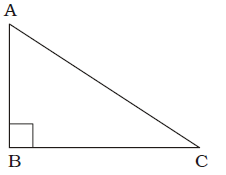Mensuration
- A room 16m 5cm long and 15 m broad is to be fitted with equal square tiles. How many number of largest possible tiles are required so that they exactly fit?
-
View Hint View Answer Discuss in Forum
Length of room = 16 metre 5 cm. = 1605 cm.
Width = 1500 cm.
Largest side of square tile
= HCF of 1605 cm and 1500 cm = 15 cm.
∴ Number of tiles = 1605 × 1500 = 10700 15 × 15 Correct Option: B
Length of room = 16 metre 5 cm. = 1605 cm.
Width = 1500 cm.
Largest side of square tile
= HCF of 1605 cm and 1500 cm = 15 cm.
∴ Number of tiles = 1605 × 1500 = 10700 15 × 15
- The length of two parallel sides of a trapezium are 15 cm and 20 cm. If its area is 175 sq.cm, then its height is :
-
View Hint View Answer Discuss in Forum
Using Rule 13,
Area of the trapezium= 1 × (Sum of parallel sides) × height 2 ⇒ 175 = 1 (15 + 20) × h 2 ⇒ 175 × 2 = h 35
⇒ h = 10 cmCorrect Option: B
Using Rule 13,
Area of the trapezium= 1 × (Sum of parallel sides) × height 2 ⇒ 175 = 1 (15 + 20) × h 2 ⇒ 175 × 2 = h 35
⇒ h = 10 cm
- ABCD is a square. Draw a triangle QBC on side BC considering BC as base and draw a triangle PAC on AC as its base such that ∆QBC ~ ∆PAC. Then,
Area of ∆QBC is equal to : Area of ∆PAC
-
View Hint View Answer Discuss in Forum

From ∆ABC
AC = √AB² + BC²
= √BC² + BC²
= √2BC
∆QBC ~ ∆PAC∴ Area of ∆QBC = BC² Area of ∆PAC AC² = BC² (√2BC)² = BC² (√2BC)² Correct Option: A

From ∆ABC
AC = √AB² + BC²
= √BC² + BC²
= √2BC
∆QBC ~ ∆PAC∴ Area of ∆QBC = BC² Area of ∆PAC AC² = BC² (√2BC)² = BC² (√2BC)²
- The hypotenuse of a right–angled triangle is 39 cm and the difference of other two sides is 21 cm. Then, the area of the triangle is
-
View Hint View Answer Discuss in Forum

AC = 39 cm.
BC – AB = 21 cm.
On squaring both sides,
(BC – AB)² = 21²
⇒ BC² + AB² – 2BC.AB = 441
⇒ AC² – 2BC.AB = 441
⇒ 39² – 2BC.AB = 212
⇒ 2.BC.AB = 392 – 212
⇒ 2.BC.AB = (39 + 21) (39 – 21)
⇒ 2 BC . AB = 60 × 18⇒ BC.AB = 60 × 18 2
= 60 × 9∴ Area of triangle = 1 BC.AC 2 ∴ Area of triangle = 1 × 60 × 9 = 270 sq.cm. 2 Correct Option: A

AC = 39 cm.
BC – AB = 21 cm.
On squaring both sides,
(BC – AB)² = 21²
⇒ BC² + AB² – 2BC.AB = 441
⇒ AC² – 2BC.AB = 441
⇒ 39² – 2BC.AB = 212
⇒ 2.BC.AB = 392 – 212
⇒ 2.BC.AB = (39 + 21) (39 – 21)
⇒ 2 BC . AB = 60 × 18⇒ BC.AB = 60 × 18 2
= 60 × 9∴ Area of triangle = 1 BC.AC 2 ∴ Area of triangle = 1 × 60 × 9 = 270 sq.cm. 2
- The ratio between the length and the breadth of a rectangular park is 3 : 2. If a man cycling along the boundary of the park at the speed of 12 km/hour completes one round in 8 minutes, then the area of the park is
-
View Hint View Answer Discuss in Forum
Distance covered by man in 8 minutes
= 
12 × 1000 × 8 
metre 60
= 1600 metre = Perimeter of park
Length of park = 3x metre (let)
Width = 2x metre
∴ 2(3x + 2x) = 1600⇒ 5x = 1600 = 800 2 ⇒ x = 800 = 160 5
∴ Area of park = 3x × 2x = 6x² = 6 × (160)²
= 153600 sq. metreCorrect Option: C
Distance covered by man in 8 minutes
= 
12 × 1000 × 8 
metre 60
= 1600 metre = Perimeter of park
Length of park = 3x metre (let)
Width = 2x metre
∴ 2(3x + 2x) = 1600⇒ 5x = 1600 = 800 2 ⇒ x = 800 = 160 5
∴ Area of park = 3x × 2x = 6x² = 6 × (160)²
= 153600 sq. metre

